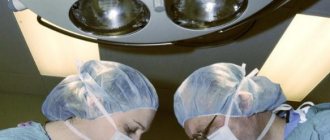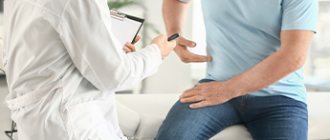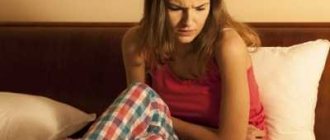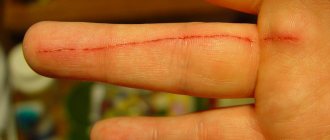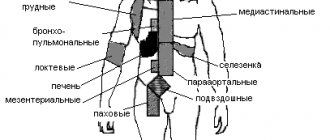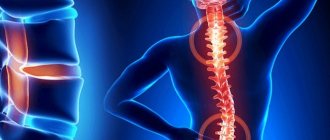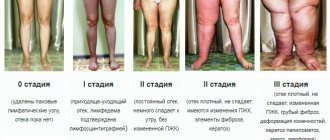Diverticular disease (diverticulosis) is characterized by a hidden, insidious course of this disease, when, against the background of complete well-being, a person suddenly finds himself in a hospital bed in intensive care wards and, often, in the operating room. The reason for this situation is diverticular disease with a complicated course.
Currently, it remains the topic of numerous discussions, seminars, and conferences, due to the fact that the problem has not been completely resolved.
Many problems can be avoided if a person understands what diverticular disease is, whether he is at risk for diverticulosis, and how to prevent the development of the disease and its complications.
In this section, we will try to analyze in more detail what is included in the concept of diverticular disease, what are the most acceptable methods for diagnosing and treating the disease, and methods for preventing complications.
Epidemiology
Applicable to Russia and the former USSR, one can note the rapid increase in the incidence of diverticular disease. In 1970, the incidence of the disease did not exceed 2-3 per 100 thousand population. In 1979, this number increased almost 6 times. According to data published by the State Research Center in 2002, the number of diverticulosis detected during X-ray examination was 14.2% of all coloproctological patients, and already in 2012 this figure doubled and amounted to 28.8%.
The growth of this disease is clearly visible along with the process of industrialization and urbanization due to changes in people’s way of life, lifestyle and nutrition. A decrease in the amount of dietary fiber consumed, a large amount of carbohydrate foods and consumption of red meat led to a significant jump in cases of diverticulosis.
In contrast, in developing agricultural countries, diverticular disease is characterized by isolated cases, which is determined by the nature of the diet, which includes a significant amount of plant foods.
The aging of society is another reason for the increase in the incidence of diverticular disease. It is noted that under the age of 40 years, the risk of developing diverticulosis varies between 5-10%. Whereas at the age of 60 years, the percentage of detected cases of the disease is already 30%, and by the age of 80 it exceeds 66%.
Thus, diverticular disease was, is and remains a serious problem posing difficult challenges for doctors and patients.
To understand the term diverticular disease, a brief description of the anatomy of the colon is necessary.
Forecast
The prognosis is usually favorable if the disease is detected in a timely manner and the necessary preventive and therapeutic measures are started, provided that the patient follows all the necessary recommendations. However, if the need for prevention is ignored, diverticular disease can lead to the development of severe complications that threaten the life and health of the patient. Moreover, the disease is more common among older people who have a variety of concomitant diseases and lower body resistance.
Anatomy of the colon
The colon consists of the following sections: cecum, ascending colon, transverse colon, descending colon, sigmoid colon. The cecum has the widest lumen, and the sigmoid colon has the smallest. The junction of the sigmoid colon and the rectum is designated as the rectosigmoid junction. It is important to note that this section of the intestine has the narrowest diameter.
The wall of the colon consists of three layers: serous, muscular and mucous. The function of the mucous membrane of the colon is the absorption of water, the formation of feces, preparing them for evacuation by secreting a large amount of mucus and the synthesis of vitamins B and K. Under the epithelium of the colon mucosa there is a submucosa, represented by loose fibrous connective tissue in which blood vessels and lymphatic vessels and submucosal nerve plexus.
The muscular layer has a frame function and is responsible for the progressive movement of feces to the rectum. The muscular layer consists of a continuous inner circular layer, divided into three ribbons of the outer longitudinal layer.
The serous membrane consists of a connective tissue base covered with mesothelium, into which outgrowths of adipose tissue, the so-called fat pads, penetrate from the muscular layer.
Folk remedies
The following folk remedies are recommended to help normalize stools and restore intestinal function:
- Carrot seed powder (to do this, you need to thoroughly grind the carrot seeds and consume this powder several times a day (2-3), with a sufficient amount of water - 200-300 ml).
- Sauerkraut brine or radish juice (drink a few tablespoons after meals, 1-2 times a day).
- Infusion of aloe leaves (approximately 150 g of crushed leaves, pour 300 g of honey, leave the resulting mixture for 24 hours, strain and take a tablespoon an hour before meals).
- Flaxseed oil 1 tablespoon on an empty stomach daily.
- Mint tea (add 2-3 mint leaves to regular tea).
What is intestinal diverticulum?
Diverticula are pouch-shaped protrusions of the intestinal wall that form in “weak” areas of the intestinal wall. There are true diverticula, which have all layers of the intestinal wall in their structure, and false ones, in which there is no muscle layer.
The diverticulum is divided into the mouth, the neck, the body and the bottom of the diverticulum. The blood supply to the diverticulum is carried out from the vessels of the submucosal layer from which thin vascular branches extend, piercing the intestinal wall and heading to the bottom of the diverticulum.
When a diverticulum forms in the projection of the fatty suspension and mesentery of the colon, it is covered on the outside with adipose tissue; when a diverticulum forms in the free edge of the intestinal wall, it is covered on the outside only with a serous membrane.
Based on the number, a single diverticulum and multiple diverticula of the colon are distinguished.
Based on the location of diverticula, right-sided, left-sided and total damage to the colon is distinguished.
Diverticulosis of right-sided localization, as a rule, is congenital in nature with a predominance of true diverticula.
With left-sided localization, diverticulosis is in most cases acquired and there is no muscle layer in the structure of diverticula.
Symptoms of diverticulitis
There are no specific signs of diverticulitis, as such. The symptoms of the pathology are similar to an attack of appendicitis, renal colic and gynecological pathologies. That is why an accurate diagnosis will require a comprehensive examination using laboratory and instrumental methods.
You should pay attention to the following symptoms:
- Bloody impurities in the stool - the inflammatory process of the diverticulum is accompanied by bleeding erosions in the cavity of the formations. At the initial stage, the abundance of discharge is not strong. The patient notices blood on underwear, on toilet paper, in stool. The discharge increases with pushing. In some cases, the diverticulum bursts and breaks into the intestinal lumen. In such situations, acute pain is present.
- Temperature increase. During the inflammatory process in the intestines, special components are released into the blood, namely pyrogens. They affect the thermoregulation of internal organs, so body temperature rises. The body's defenses are activated and begin to fight inflammation.
Common symptoms include decreased appetite, nausea and vomiting, lethargy, belching, flatulence and bloating. Diverticula become inflamed, the body is poisoned by harmful substances, so the signs of intoxication are clearly pronounced.
Causes of diverticulosis
The reasons for the development of diverticular disease remain a topic of much debate to this day. There are several theories about the occurrence of diverticula.
The most likely and most often discussed reasons include: increased intraluminal pressure in the intestine, increasing weakness of the intestinal wall, impaired colon motility and congenital predisposition.
Increased intraluminal pressure in the intestine:
Currently, the most recognized factor in the occurrence of diverticulosis is food. A decrease in the proper amount of plant fiber in the diet reduces the volume of feces, which in turn leads to a disruption in their evacuation with an increase in intraluminal pressure in the intestine. The evidence base is based on observations of vegetarians and residents of agricultural countries who consume significant quantities of fiber, in whom the incidence of diverticula is 42% lower than in a group of people who do not consume plant fiber in sufficient quantities.
Increasing weakness of the intestinal wall:
The fact that diverticula appear in old age confirms the theory of weakness of the intestinal wall, which is a consequence of the aging process of the body, when degenerative changes in muscle tissue and collagen fibers develop in the intestinal wall.
Colon motility disorders:
Impaired intestinal motility leads to constipation and increased pressure in the intestinal lumen when it is necessary to evacuate feces. Loss of elasticity of the intestinal wall leads, when it is stretched, to micro-tears of the circular muscles, through which diverticula begin to form.
Vascular disorders in the intestinal wall:
It is impossible not to indicate the vascular component in the formation of a diverticulum. Impaired blood supply leads to structural changes in the intestinal wall, while at the site where the vessel passes through the muscular layer to the intestine, an expansion is formed, which over time transforms into the mouth of a diverticulum.
Congenital predisposition:
Various congenital systemic connective tissue diseases and collagenoses are a provoking factor in the development of diverticular disease.
Diet
Since diverticular disease occurs much more often in people who limit their intake of vegetables and fruits, all patients with diverticulosis need to use foods high in plant fiber and pectin. Wheat bran (especially coarse bran) is very useful, which significantly reduces the pressure inside the intestine and accelerates the rate of movement of contents through the intestines.
It is imperative to exclude all foods that cause increased gas formation (legumes, lentils, grapes, sauerkraut, butter and yeast dough, onions) and constipation (blueberries, rice). It is also advisable to exclude seeds, fruits with a large number of grains and excessively coarse fiber (persimmons, pineapples, turnips, radishes, radishes).
Diagnosis of diverticulosis
Irrigoscopy:
One of the most accessible diagnostic methods is irrigoscopy, which allows one to reliably identify the location, size and number of diverticula.
! This method is not recommended for use in complicated cases due to the high risk of perforation of the inflamed diverticulum.
Colonoscopy:
A method that allows you to visualize diverticula and identify complications is colonoscopy. With this procedure, it is possible to fairly reliably diagnose inflammatory changes in the area of the mouth of the diverticulum and detect bleeding from the diverticulum.
! This method cannot be recommended as a mandatory procedure if the patient has a clinical picture of acute surgical disease of the abdominal organs.
Multislice computed tomography:
The safest method for diagnosing diverticular disease, both during the latent period and when diagnosing complications, is computed tomography, which allows not only to confirm the presence of diverticula in the patient, but also to determine the nature of the complications. These include acute diverticulitis with perforation, abscess, and peritonitis.
! Despite its safety, this method is used to a limited extent due to the high cost of the study and inaccessibility due to the lack of MSCT equipment in a number of hospitals.
Ultrasonography (ultrasound of the abdominal cavity):
An effective and accessible method for diagnosing complications of diverticular disease, it allows us to identify inflammatory changes in the wall of the colon, signs of abscess and peritonitis.
Laparoscopy:
Among the invasive methods for diagnosing complications of diverticular disease, laparoscopy should be noted, which can be considered not only as a diagnostic procedure, but also of a therapeutic nature. With this method, it is possible to perform sanitation measures for local peritonitis, drainage of the abdominal cavity.
Risk factors
Before you learn how to treat diverticulitis, it is worth addressing the risk factors. In this case, these include the already mentioned heredity, age, as well as poor nutrition and lifestyle, which contribute to impaired peristalsis. For example, people who sit a lot, hardly move, and have weak muscles are at risk. Many people hardly associate sports and peristalsis, but developed abdominal muscles really help the intestines to function properly. But you can’t get too carried away with heavy sports - otherwise there will be a backlash.
We also include anyone who does not follow the drinking regime into the risk zone - without a sufficient amount of moisture, the contents of the intestine become too dense, which can cause damage to its walls. Those who abuse bad habits, do not follow basic hygiene rules and do not take good care of their health are also in danger.
The mechanism of development of complications of diverticulum
Diverticular disease is a progressive disease. Diverticula do not undergo reverse development. The risk of developing diverticulitis after a diverticulum persists for 5 years is approximately 10%. If the disease lasts more than 10 years, the risk increases to 25%.
Diverticulitis:
With diverticular disease, inflammatory changes develop in the wall of the diverticulum. The absence of a muscle layer leads to the fact that intestinal contents stagnate in them without the possibility of evacuation. This leads to the formation of fecalitis (fecal stone) in the lumen of the diverticulum, followed by inflammation in the wall of the diverticulum.
Diverticulum perforation:
Inflammatory changes may be limited to the diverticulum wall with its swelling and infiltration. With aggressive microbial flora, inflammation takes a malignant course and can lead to perforation of the diverticulum wall, which in turn can be delimited by the adjacent fatty tissue of the intestinal suspension or mesentery with the formation of an abscess.
Violation of the integrity of the diverticulum wall can lead to serious complications in the form of peritonitis when the diverticulum is localized on the free edge of the intestine.
Relapses of diverticulitis:
When acute inflammation is relieved, restoration of the diverticulum wall does not occur. The damaged mucosa is replaced by granulation tissue, coming into close contact with the tissues surrounding the diverticulum, creating favorable conditions for a chronic inflammatory process and subsequent relapses of acute diverticulitis.
Bleeding from a diverticulum:
Damage to the inflamed mucous membrane of the diverticulum by fecalitis when it comes out of the mouth or the development of a bedsore can lead to bleeding.
Fistula formation:
When inflammatory changes spread to nearby abdominal organs and/or the anterior abdominal wall, fistulas may form. Through such anastomoses, intestinal contents can spread into the lumen of the bladder, the uterine cavity, and even onto the anterior abdominal wall.
Prevention
Among preventive measures, a varied and balanced diet is of primary importance. Due to the fact that a diet low in plant fiber predisposes to the formation of diverticula, in order to reduce the risk of developing the disease, it is necessary to include large quantities of plant-based products. Since timely detection of diverticula plays an important role, it is extremely important to undergo preventive examination and regularly perform endoscopic examination of the intestine.
Classification and treatment of complicated diverticular disease
To characterize the complicated course of diverticular disease, the Hinchey EJ classification proposed in 1978 is widely used.
! Only a DOCTOR can determine the nature of the complication and prescribe appropriate treatment. Do not self-medicate, this can lead to serious consequences!
Hinchey I.
Pericolic abscess or infiltrate: an acute condition caused by inflammation of the diverticulum with the possible formation of a limited abscess (abscess) in the mesentery of the colon or in its fatty suspension. Treatment of this complication is conservative and consists of prescribing a strict diet and antibacterial drugs.
Hinchey II.
Pelvic, intra-abdominal or retroperitoneal abscess. This condition is characterized by the formation of an abscess in a limited space in the abdominal cavity or in the peritoneal space outside the intestinal wall. Treatment consists of hospitalization in a surgical or coloproctology hospital, prescription of bed rest, strict diet, antibacterial therapy and detoxification treatment. If there is no effect, surgical treatment is indicated. As a rule, a sufficient volume of surgical intervention is puncture of the abscess for the purpose of its evacuation. However, if ineffective, emergency surgery is indicated to remove the source of purulent infection. At this stage of the disease, it is possible to perform a one-stage resection intervention with restoration of intestinal continuity.
Hinchey III.
Generalized purulent peritonitis. A serious complication that develops when an abscess breaks into the free abdominal cavity. Treatment is only surgical. In case of this complication, resection of the affected area of the colon is performed with the formation of a stoma, sanitation and drainage of the abdominal cavity. Subsequently, reconstructive intervention is performed aimed at restoring natural passage through the intestines.
Hinchey IV.
Generalized fecal peritonitis. The most severe complication that develops in advanced cases, when patients seek medical help late, in weakened patients, and in elderly people. The scope of surgery is similar to treatment for Hinchey III, but the postoperative period requires long-term intensive care in an intensive care unit.
How to make an appointment with a gastroenterologist
You can make an appointment with a gastroenterologist at Meditsina JSC (academician Roitberg’s clinic) on the website - the interactive form allows you to select a doctor by specialization or search for an employee of any department by name and surname. Each doctor’s schedule contains information about visiting days and hours available for patient visits.
Clinic administrators are ready to accept requests for an appointment or call a doctor at home by calling +7 (495) 775-73-60.
Convenient location on the territory of the central administrative district of Moscow (CAO) - 2nd Tverskoy-Yamskaya lane, building 10 - allows you to quickly reach the clinic from the Mayakovskaya, Novoslobodskaya, Tverskaya, Chekhovskaya and Belorusskaya metro stations .
Planned surgical treatment of diverticulosis
As a rule, after a single attack of diverticulitis, surgical treatment is not indicated, but may be recommended for persons under 45 years of age. The decision to perform an operation is made individually.
After successful conservative treatment of two or more episodes of diverticulitis, elective surgery is recommended. The indications for elective surgery are limited by the high anesthetic and surgical risks identified during examination of the patient.
Elective surgical treatment is mandatory after conservative treatment of complicated diverticulitis.
Planned surgical treatment is indicated in the presence of fistulas.
Postoperative follow-up
After the operation, 3-4 incisions 5-10 mm long remain on the skin of the abdomen. From the first day, patients begin to get out of bed, drink, and on the second day take liquid warm food. Discharge from the hospital is carried out on 3-4 days, depending on the severity of the disease. The patient can begin work in 2 - 3 weeks. A strict diet should be followed for one and a half to two months, a softer diet should be followed for 2-3 months. Further, as a rule, the patient leads a normal lifestyle - without medications or diet.
At the request of patients, the clinic can undergo a full examination before surgery to determine the optimal treatment tactics and choose the method of surgical intervention.
X-ray contrast examination of the intestines
Irrigoscopy or X-ray contrast examination of the intestine allows you to take an X-ray and see the outline of the large intestine. It is carried out in equipped diagnostic rooms. In order to see the outlines of the internal organs, the patient is injected with a contrast liquid. We are talking about a solution of barium sulfate. As a rule, the contrast agent is administered through an enema or by ingestion.
The endoscopist takes pictures in a lying and standing position to observe the functioning of the internal organs in different situations.
